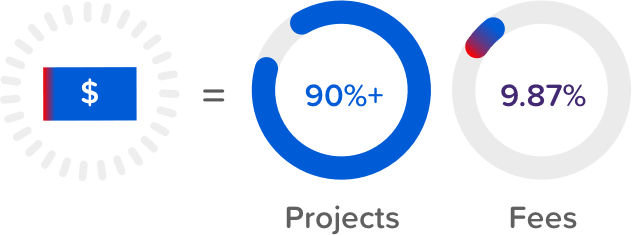Paradise Island
Before a carbon project is allowed onto the Cool Effect platform, our team thoroughly vets its science and financials to ensure that it’s viable, high quality and meets our Carbon Done Correctly criteria. Even then, there are some things that numbers can’t tell you. In order to get the full story on a potential Cool Effect project, a large part of our vetting process involves site visits from our team in order to see that carbon project’s community impact — The Good On The Ground — up close and in person.
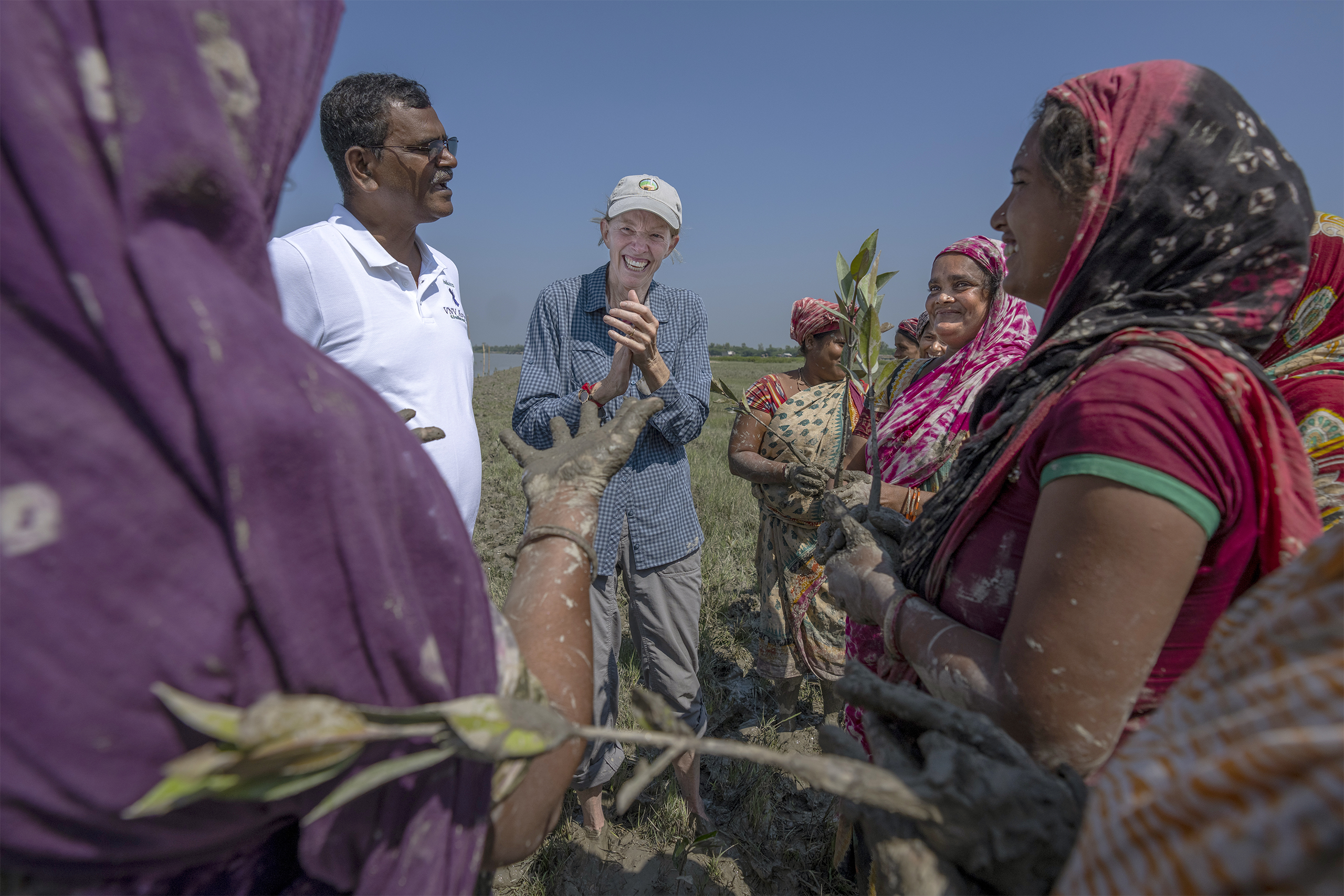
That process is what led us to the Sundarbans, a cluster of low-lying islands in the Bay of Bengal, an active delta that spans around 40,000 sq km and lies half underwater. Within the Sundarbans you’ll find the Sundarbans mangrove forest, a 10,000 sq km stretch of forest that spans India and Bangladesh and is home to many rare and threatened wildlife species, including the single largest population of Bengal tigers in the world.
In addition to the wildlife, this area is home to over three million native residents, whose homes and livelihoods (primarily fishing, crab harvesting, timber, and honey collecting) are inextricably tied to this complex, dynamic, and fragile ecosystem. In just the last three years, four tropical storms have slammed the Sundarbans, causing flooding, wind damage, the destruction of their crops, and the deaths of native fish. Centuries of populating this area have left the people particularly resistant to storms like these, but the increasing severity and frequency of these storms thanks to our warming planet has pushed even their resilience to a breaking point.
The incredible project in place here solidifies defenses against these storms, provides them with additional forms of income, and also actively reduces carbon emissions, all thanks to the help of one powerful plant — the mighty mangrove.
Mangroves are prized for their ability to protect coastal areas from the worst impacts of tropical storms, with some studies showing that they can reduce the intensity of waves by up to 66%. And aside from their ability to shield the shoreline, they’re an ideal vehicle for natural carbon capture, and their massive root systems mean they not only capture but can store large amounts of carbon as well. In fact, mangroves capture five times more carbon than terrestrial trees and sequester carbon nearly 400% faster than tropical rainforests.
This project prioritizes mangrove restoration, coastal green-belt protection, and the creation of additional local income-generating opportunities for the communities, all through planting saplings of native mangrove species. Representatives from local communities are actively consulted throughout this process, with many actually taking up employment with the project and planting activities.
The carbon finance generated by this project is another example of what The Good On The Ground can do — carbon finance will not just protect these villages with mangrove defenses, it will help local villagers to thrive. With plants now in the ground, the project needs to ensure they are growing and replace any that are washed away by the tides. They are surveying the villagers to determine the areas of greatest need.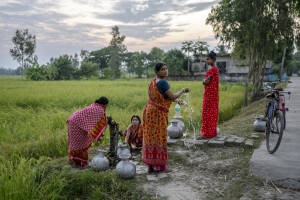
One of the ideas is to increase the range of grades in a small local school, providing increased educational opportunities for children that simply weren’t possible before.
Another idea under consideration is to label and market local mangrove honey that is rare and highly valued outside the project area. It is hoped that the increased forest cover will lead to a greater number of honey bees. Some locals detailed their process for collecting honey, which is a bit more dangerous than we might think. . In order to collect honey, a group finds some bees, then follows them through the forest until they discover the hive. From there, it’s just a quick climb up the tree to retrieve the honey. This is definitely a group project because while the honey retrievers are hard at work, one member of the team needs to stay on the ground — to be tiger-watching.
The point is that the project surveys the communities to gain an understanding of how best to use project resources when the credits begin issuing.
The carbon finance investment that supports this project is already doing a world of good for the people of the Sundarbans, and doing a planet-sized amount of good for Earth. Much like the powerful roots of the mangrove tree, The Good On The Ground from quality carbon projects can help support, protect, and empower the people and places who need it most.
For Peat’s Sake
We knew before our recent visit to The Katingan Mentaya Project in Indonesia (home to For Peat’s Sake on our platform) that the impact of carbon finance on this region and its people was significant, but once we were there, the true magnitude of this project’s benefits began to sink in.
Palm oil production, acacia conversion, illegal logging, and hunting threaten Indonesia’s peatlands, which comprise nearly 40 percent of the world’s tropical peatlands. Worldwide, peat soils contain more than 600 gigatonnes of sequestered carbon, which represents nearly 44% of all soil carbon — and exceeds the carbon stored in all other vegetation types, including all of the forests on Earth. As such, damaged peatlands are a major source of greenhouse gas emissions, responsible for almost 5% of global anthropogenic CO2 emissions.
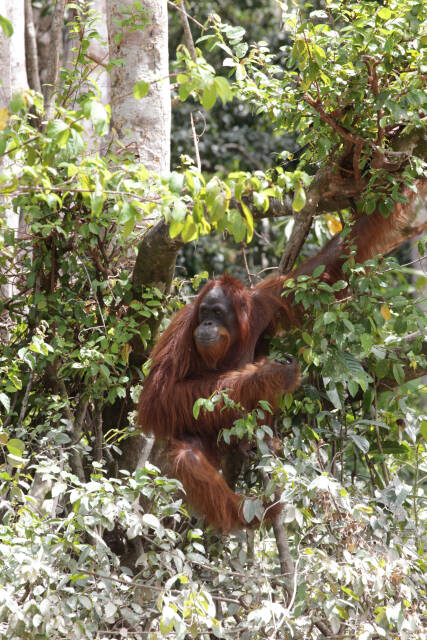 This project specifically protects 157,000 hectares of the peat swamp ecosystem (home of one of the largest remaining intact peat swamp forests in Indonesia), from conversion to acacia forests, which would then be clear-cut to make paper. Thanks to the climate finance generated by this project and the hard work of the local communities, we’re able to help avoid the emissions of 7.5 million tonnes of CO2e each year, for a total of 447 million tonnes over the 60-year project period.
This project specifically protects 157,000 hectares of the peat swamp ecosystem (home of one of the largest remaining intact peat swamp forests in Indonesia), from conversion to acacia forests, which would then be clear-cut to make paper. Thanks to the climate finance generated by this project and the hard work of the local communities, we’re able to help avoid the emissions of 7.5 million tonnes of CO2e each year, for a total of 447 million tonnes over the 60-year project period.
Additionally, as peatland forests hold many times more carbon than a typical tropical forest, most of it below ground, the carbon they contain is especially resilient to wildfire and other natural disasters. Some of the oldest peat found in this project area has been estimated to be roughly 27,000 years old, so provided that the land remains protected from landscape conversion and is effectively managed, it can keep that carbon in the ground, where it belongs.
While the area is more resilient than your average forest to disaster, the threat of deep burning peat fires does remain the primary natural threat to this project’s success — which is why fire prevention and planting additional trees are the main focus for nearly 400 community members receiving financial support from this project, with salaries averaging 50% over the minimum wage.
But it’s not simply employment opportunities that increase while this project is reducing carbon emissions — funds generated by this project are also used to improve public health infrastructure, increased sanitation, and additional fire prevention measures. It also increases vocational opportunities for women in the form of microfinance loans for small business development with training and finance opportunities and a Community Investment Fund.
Initially, local men took the lead on managing the microfinance program, and after a few initial logistical and operational hiccups, they were quickly pushed out of their positions by local women. Since this peaceful exchange of power, these women have done a stellar job ramping this program up to [FACT CHECK] over 1000 microfinance loans to help community members set up household-based micro businesses.
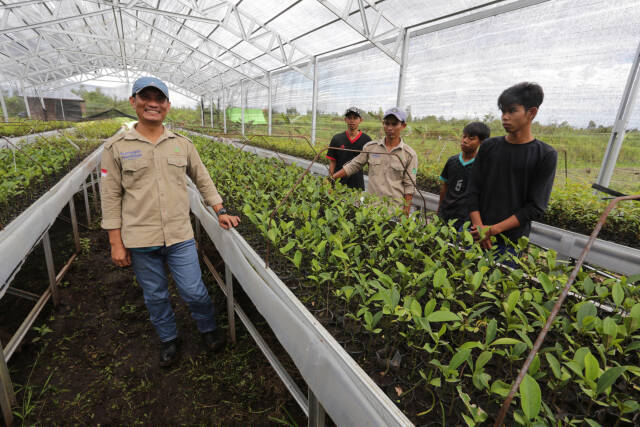
The presence of legitimate business opportunities provided by carbon finance has also done wonders to reduce risks to the success of the project. Activities like illegal logging and poaching simply no longer have the appeal they once did thanks to the presence of honest, sustainable, steady opportunities for income.
We spoke with a former illegal logger during our latest visit, who has taken on new employment in a forest nursery. He’s now tasked with protecting, preserving, and populating large portions of the very same forest he used to cut down, and he’s not the only one who’s woken up and smelled the peat. Six former poachers in the area are also now working together in a nursery, where they currently grow rubber and rambutan seedlings. Project management has established a demo garden to learn what high value crops can grow well in small holder farms with peat based soils. But crop type isn’t the only expansion they have on the horizon — they’re looking to expand the nursery and give other former poachers and loggers an opportunity for a new livelihood.
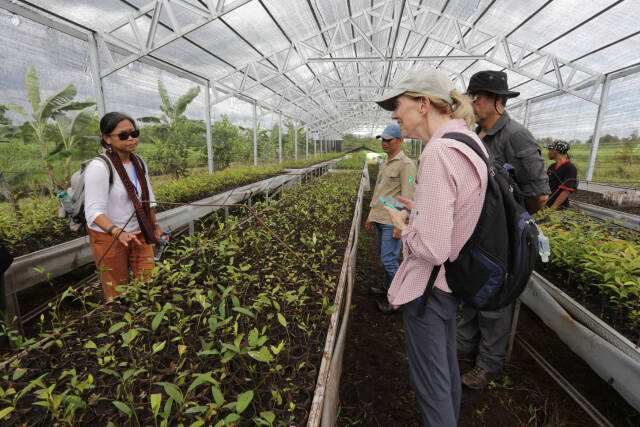
Projects like this are the epitome of Carbon Done Correctly. Their commitment to science means that the planet benefits, and their appreciation of The Good on the Ground means that people benefit as well. Climate finance and climate action can truly do some amazing things.
Fertile Ground
Northwest of Dehli in the center of India as well as in a location outside of Lucknow, another carbon project is using carbon finance-funded technology to help farmers adopt new and improved agricultural practices, something we refer to as The Good on The Ground.
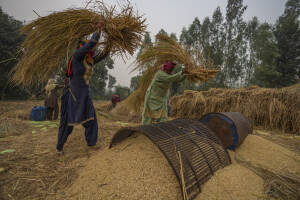
When it comes to agriculture, India’s most prevalent crops include rice and sugar, so much so that they’re the second largest producer of rice and sugar cane in the world. As such, agriculture is also one of India’s leading causes of greenhouse gas emissions thanks to a lack of sophisticated farming methods, the production of massive amounts of crop residue, burning fields in preparation for the next planting, and more. Increasing global temperatures also impact India much more intensely than other countries, and one unfortunate side effect of our warming planet is a reduction in the overall yield of these two prized crops.
Adding to the problem is the fact that rice stalk, cotton stalk, or even sugar cane residue, releases greenhouse gases when burned as well as incinerates some of the carbon in the soil. Rice stalk is burned after harvesting because on average, farmers have roughly two weeks between the harvest and the next planting. With no way to remove these stalks efficiently, burning them is simply the most time-efficient option. Never mind that it also creates a dense fog of smoke and air pollution, evaporates valuable water, and destroys soil nutrients. However, if the stalks can be retilled into the soil and naturally decompose, groundwater is maintained, microorganisms flourish and the soil becomes more nutrient-dense and porous for the next round of planting. We spoke with local community members who mentioned they’re also seeing improved health thanks to the avoidance of using burning practices.
The project addresses the needs of the smallholder farmers, the most vulnerable to climate change with the least access to modern practices, trying to help make their lives easier and increase their crop yields and incomes. The funds that will be generated from the sale of carbon credits by this project will provide direct payments to farmers, provide payment for harvested biomass, resources for teaching crop rotation, no-till practices, mulching and other more sustainable farming activities, and advanced tools and technology to help them monitor and maintain carbon levels in their soil. To see how vast the production is, we witnessed both rice and cotton harvest during a recent visit.
This project intends to bring the use of 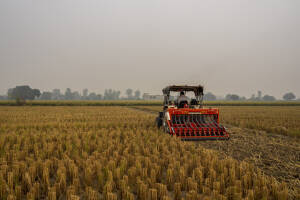 modern technology, that would otherwise not be readily available. One example, the Super Seeder Machine is a no-till planter allowing the new crop to be sown into the soil through the shredded residues of the previous crop., This eliminates the need to burn crop residue, keeps sequestered carbon in the earth where it belongs, and plants the next series of crops, all in one pass.
modern technology, that would otherwise not be readily available. One example, the Super Seeder Machine is a no-till planter allowing the new crop to be sown into the soil through the shredded residues of the previous crop., This eliminates the need to burn crop residue, keeps sequestered carbon in the earth where it belongs, and plants the next series of crops, all in one pass.
While the project maintains a strong “boots on the ground” presence to help implement this new technology, some additional benefits come from a little higher up — from a series of satellites orbiting the planet. Over 100+ satellites continuously measure the soil carbon, helping prevent over-irrigation while monitoring carbon levels in the soil. That information is relayed to the ground team, who work with farmers to use this advanced soil technology and data tracking to work with local farmers to optimize their crops. So far, the program has proved to be a rousing success, with 100,000 farmers signed up to date — and more are joining every day. The goal is to enroll 1,000,000 to 2,000,000 farmers at the project’s full scale.
Not only do these improved agricultural practices reduce costs associated with farming, but the improved soil quality also produces larger and more resilient crops, increased revenue for farmers, and job opportunities for local communities during the implementation of the technology and the continued monitoring of the soil.


